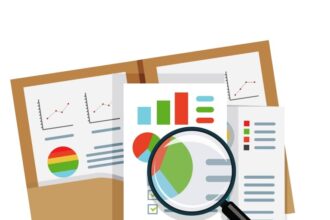The internet offers many benefits for kids. These include music, interactive games, communicating with teachers or friends, or researching things for school. The internet is also like a big, dangerous city that has no police. Big data tracks their information and movements online, while kids can also be exposed to cyberbullies, identity theft, inappropriate content, and online predators. That’s one reason why respecting your child’s privacy and keeping them safe online is a balancing act that many parents find challenging.
- 1. Top Reasons to Monitor Your Child Online
- 2. The Role of Big Data
- 3. Digital Footprints: Tracking Online Activities
- 4. Safety and Privacy: A Balancing Act
- 5. Behavioral Analysis for Child Safety
- 6. Early Intervention for Positive Development
- 7. Parental Control Tools and Solutions
- 8. Education and Awareness for Parents
When it comes down to it, monitoring your child online isn’t about freedom or privacy. It’s about safety. It’s about protecting and educating your child about the wild, wild, west that is the internet. It’s about having honest conversations and keeping those lines of communication open. It’s important to protect children’s information from big data, predators, or anyone who wants to exploit them. Parents who monitor and limit online screen time are much more aware and able to intervene when an issue crops up.
Learn about the basics of monitoring your child online, the role that big data plays in tracking personal information, how to balance privacy with safety, educating ourselves and our children about digital footprints, how early monitoring and intervention can help with positive child development and behavioral analysis, education and awareness for parents, and best parental controls, tools, and solutions.
1. Top Reasons to Monitor Your Child Online
Whether you’re just starting out or want to stay up to date about your child’s current online activities, knowing why it’s important to stay informed about what content your child is consuming or who they are chatting with online is vital to ensuring your child’s well-being and safety.
First, keep in mind that a child’s online interactions don’t happen in a vacuum. They aren’t safe just because they’re sitting in their room behind a screen. They can be tracked, spied on, coerced to send images of themselves to predators, bullied, harassed, blackmailed, exposed to violent or sexual content, or even lured out to meet someone in person.
Parents should stay aware of the kinds of threats on the internet and discuss ways with their children to stay aware, help identify issues, and stay safe online.
- Cyberbullying: Many kids who experience online harassment go through severe emotional distress but don’t tell their parents, so parents have no idea that their child could be spiraling mentally and emotionally due to cyberbullying. Monitoring your child’s online activities can help alert you if they’re being bullied or if your child is bullying others.
- Sexting: Know if your child is sending compromising pictures of themselves to someone. Help your child stop this behavior by recognizing the risk that this places them in for sextortion, feelings of guilt or exposure, problems with future employers, and help them understand that the internet is forever.
- Online predators: The internet is the easiest place for child predators to find, target, and groom children. Talk to your child about things to look for and bring it up in a neutral way, such as discussing a news story. Watch for signs that someone is taking an unhealthy interest in your child. This can include an older person taking an intense interest in children, developing a close, private relationship online, isolating them from loved ones, keeping the relationship a secret, or trying to get them to send photos, video chat, or meet up. Unless you monitor your child’s activity, you won’t know if your child is talking to a predator online.
- Suicide or illegal activities: Staying in the loop about what your child is reading and discussing online can help you identify if your child is involved with suspicious, illegal, or even suicidal tendencies. This can refer to worrisome content, discussions, or friends who are trying to get your child into drugs or other negative activities. It can help you stay connected to your child and intervene before they do something that they can’t undo.
- Identity theft and personal information: It’s easy for children to reveal more information about themselves than they intend online. This can include their activities, location, posting things that could damage their reputation, job opportunities, and college admission, or personal information that can enable someone to open credit cards or bank accounts in their name, commit fraud, and trash their future creditworthiness.
- Malware and viruses: Children don’t have the life experience or awareness to always evaluate whether a website, app, or download is trustworthy. Limit screen time, install antivirus software on their computer, and talk to your child about how to identify phishing links or sketchy websites that may contain viruses or malware to help them avoid infecting their computer and navigate the internet safely.
Checking young children’s internet usage, monitoring any posts and profiles, setting time limits on screen time, supervising apps, games, or social media platforms prior to download and use, and keeping electronic devices in your home’s common areas can help protect your child online.
2. The Role of Big Data
Big data refers to the huge volume of internet traffic that is generated and processed by people and their computers.
Big data relies on personal information to track patterns and generate insights into personal interests, shopping habits, and other information. This gives it the ability to collect and store information from our smartphones, computers, and other devices that connect to the internet.
Because computers can recognize voices through microphones, identify faces through webcams or cameras, store biometrics from a wearable device, record financial activities, use GPS tracking to pinpoint our exact location, and use cookie technology to track our browsing history, it’s vital to stay aware and protect ourselves and our children from those who use big data to track us and collect information from our online presence.
3. Digital Footprints: Tracking Online Activities
What happens online stays online. A digital footprint refers to the trackable data trail that we leave behind when we use the internet. This encompasses the websites we visit, the information we post or submit online, and emails or images that we send. A digital footprint allows big data or other bad actors to track our internet activities and personal devices.
It’s important to help children recognize that their digital footprint – from what they search for to the things they send and share – exists forever and can impact their college chances, their career, and future opportunities, or turn them into a cyber-attack target.
To stay on top of this, utilizing a digital footprint tracker can be an essential tool. This tool helps individuals and families monitor what information is available about them online, allowing them to address any privacy risks before they escalate. A digital footprint tracker can also serve as a proactive step toward ensuring one’s online activity doesn’t lead to unintended consequences.
4. Safety and Privacy: A Balancing Act
Many parents are concerned about breaching their child’s online privacy with safety. While navigating this fine line between “spying” and protection can feel like a tricky balancing act, it’s important to create an open, trusting environment where you can help your child build independence while learning how to stay safe, make good choices, and responsible decisions.
If you’re in doubt about which aspect to prioritize, it’s important to stress that safety comes first. For example, if your child got into drugs, would you stand back and respect their privacy? Or would you monitor them, search their space, and talk to them about the serious impact and how to move forward?
Privacy comes next. It’s natural that children will desire more privacy as they grow up. Since children aren’t mature, it’s a parent’s job to distinguish between healthy privacy and unhealthy secrecy. A child’s brain is still developing, so they can make quick, often life-altering decisions. While teenagers do need some space, it’s important to stay aware and present in your child’s life to ensure they are making the best decisions, both in person and online.
Balancing privacy with safety can look like giving them alone time, letting them have private conversations with siblings or friends, respecting room privacy by asking before taking something out and knocking before going in, and letting them keep a private journal.
5. Behavioral Analysis for Child Safety
Being a parent is a tough and demanding job. Monitoring your child’s behavior, analyzing their online presence, talking through situations together, and giving them the tools to make good choices and navigate the internet with awareness, caution, and maturity will help them stay safe online.
Above all, it’s important to help your child stay aware of risky online behaviors, encourage your child to come to you with questions or concerns without fearing judgment, and help guide your child in how to make safe and responsible choices online.
6. Early Intervention for Positive Development
It’s important to start early and discuss the reasons behind your internet safety rules and restrictions with your child.
Make sure that things are kept out in the open. Put ground rules in place. Install parental protections and monitor your child’s usage, mood, or behavior for any signs of trouble.
7. Parental Control Tools and Solutions
There are many tools that enable you to monitor and control your child’s access to adult content and shield them from online predators. Many internet service providers have parental control choices. There are also software programs and filters that restrict tracking and personal information,
You can also schedule internet time, keep electronics in an open, common space, enable family sharing, communicate, encourage learning opportunities, and get your child involved in interesting, real-world activities.
8. Education and Awareness for Parents
We need to develop digital literacy and awareness before we can expect our children to act safely and responsibly online.
Get educated about digital literacy and your child’s internet trends, talk to other parents, engage and communicate with your child, and set guidelines for yourself and your child that promote online safety.
Conclusion
Being a parent is the hardest job in the world, but it’s possible to create an open, caring, and informed environment surrounding internet safety.
It’s important to nurture your relationship with your child, explain the reasons behind family rules, and mentor your child about how to navigate and make safe choices online.









